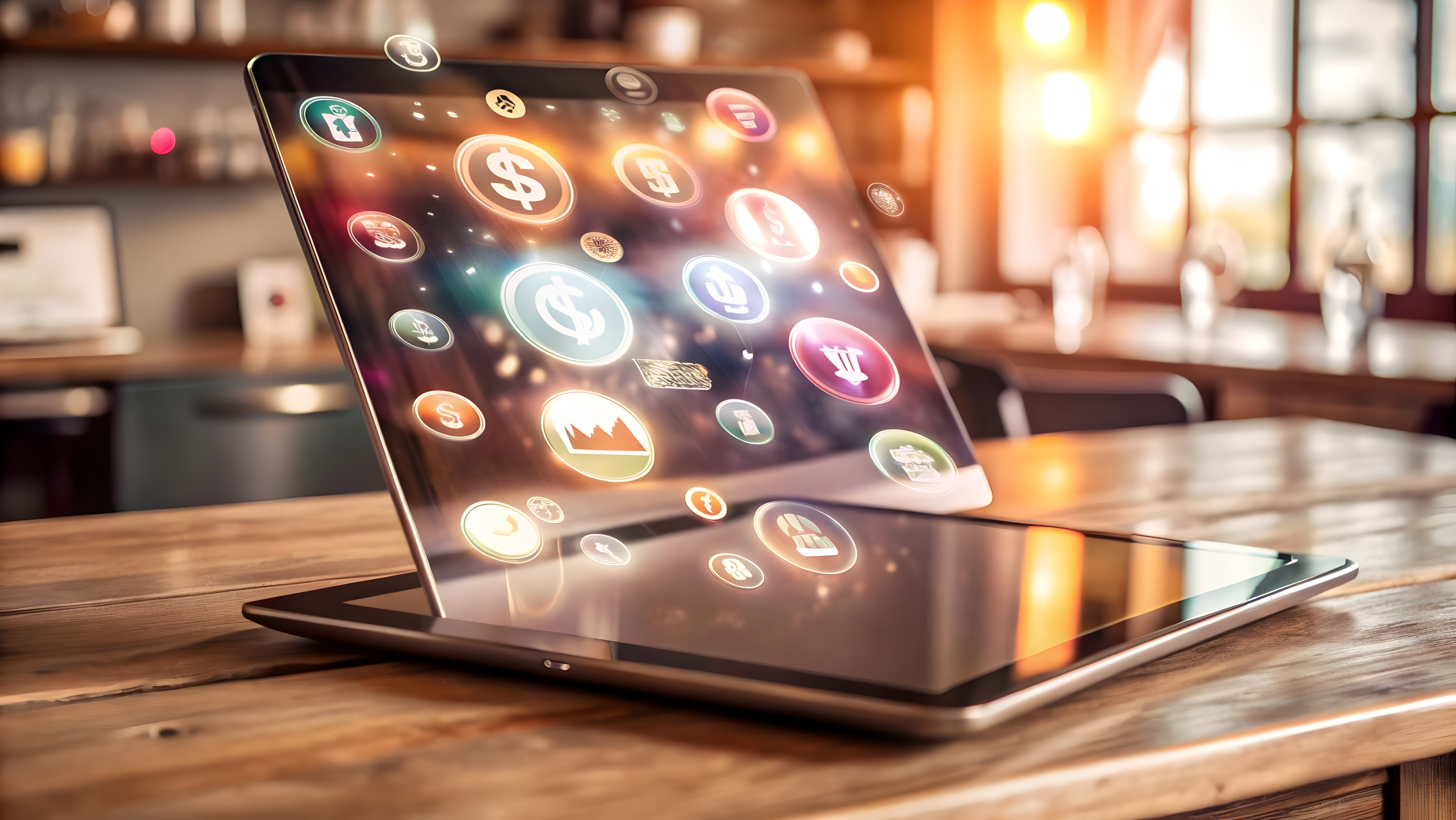Digital marketing may dominate headlines, but traditional marketing channels remain powerful drivers of growth in 2025. According to the Nielsen Annual Marketing Report 2025, while digital channels represent roughly 73% of total ad spend, traditional platforms like TV, radio, print, and billboards still deliver higher trust and long-term brand recall. The report also notes that 44% of marketers plan to split budgets about 60/40 between digital and traditional channels to maintain broad awareness while maximizing precision targeting.
Meanwhile, data from Statista’s Global Advertising Market 2025 shows total ad spending is projected to surpass $1.1 trillion this year, with hundreds of billions still flowing into offline formats. Even as digital grows, marketers are rediscovering the power of human connection, realizing that offline visibility reinforces brand credibility in ways that banner ads and algorithms can’t replicate.
The smartest brands aren’t choosing between channels—they’re balancing them. This guide explores why traditional marketing channels still matter, how they integrate with digital strategies, and how hybrid campaigns are driving stronger ROI and engagement in 2025.

Traditional marketing channels are the long-established forms of media that helped shape advertising before the digital age. These include television, radio, print media, direct mail, billboards, and in-person events. What makes them unique isn’t just their format—it’s their ability to connect emotionally, tangibly, and memorably.
Digital marketing offers targeting precision and analytics, but traditional channels win on reach and credibility. A 30-second TV ad during a live event can command attention for millions, while a well-placed print spread can leave a lasting impression. A direct mail postcard, for example, stays visible in a customer’s home far longer than a fleeting email.
Today’s marketers use both worlds together—combining the emotional depth of traditional campaigns with the performance tracking of digital ones. For instance, a billboard might include a QR code linking directly to a product page, while a print ad can lead to a personalized landing page designed to measure conversions.
Print media—including newspapers, magazines, and brochures—remains a reliable source of authority and engagement. According to Statista’s industry data, magazine advertising continues to generate billions globally because it attracts affluent and focused audiences. Luxury brands such as Rolex, Chanel, and BMW still choose print to align their products with credibility and craftsmanship. A full-page placement in a premium publication creates an experience that digital ads can’t match—inviting readers to pause, reflect, and connect.
Despite the rise of streaming, TV remains an essential storytelling medium. Statista projects global television advertising revenue to exceed $130 billion in 2025, proving that video storytelling still captivates mass audiences. Events like sports, news, and award shows sustain television’s cultural relevance. Coca-Cola’s “Real Magic” campaign leveraged both TV and digital channels to blend emotional resonance with measurable reach, showing how traditional storytelling can amplify data-driven targeting.
Radio continues to reach wide audiences—Nielsen reports that over 90% of U.S. adults listen to radio every week. Local stations and talk programs foster a sense of community and trust that’s difficult for digital platforms to replicate. Regional businesses often rely on radio to share time-sensitive promotions or build brand familiarity, while the rise of podcasts and streaming audio extends radio’s influence into new, digital-friendly formats.
Direct mail is back in favor, revitalized by data integration and automation. Nielsen’s research shows that more than half of marketers plan to increase their direct mail budgets in 2025, thanks to its high engagement rates and newfound measurability. Companies like Sephora and Warby Parker now send personalized mailers with QR codes that direct recipients to online discounts or loyalty offers, driving conversions up to eight times higher than typical email campaigns.
Billboards, posters, and transit advertising continue to command attention in ways digital ads cannot. The global out-of-home (OOH) market is forecast to exceed $40 billion this year, driven by the adoption of digital billboards and location-based targeting. Nike’s “You Can’t Stop Us” campaign illustrated this perfectly—pairing outdoor creative with mobile retargeting to connect awareness and performance. OOH remains one of the few ad formats that can dominate attention without interruption, building familiarity through repetition.
Live events, trade shows, and sponsorships provide brands with opportunities to create face-to-face experiences. A 2025 Nielsen survey found that 67% of consumers trust brands more after engaging with them in person. Red Bull’s approach to event marketing—combining extreme sports activations with livestreamed digital content—shows how traditional presence can extend digitally. Each event creates a flywheel effect, generating both on-site engagement and online amplification.
Sales calls, product demonstrations, and local presentations remain essential for relationship-based marketing. In B2B and high-value transactions, these interactions foster trust and understanding that automated systems can’t replicate. Today’s marketers blend tradition with technology—using CRM software to log conversations, follow up with personalized offers, and measure outcomes while maintaining the authenticity of human connection.
Let’s talk about how data, creativity, and performance strategy can drive real growth.
Partner with Future Digital to turn insights into measurable results.
Modern marketing isn’t about choosing between channels—it’s about integration. The most effective campaigns in 2025 operate in the “phygital” space, combining physical presence with digital precision.
For example, print ads often feature QR codes that lead directly to eCommerce pages or sign-up forms. Billboards can trigger mobile retargeting ads for drivers who pass them. Event attendance can be tracked through CRM platforms like HubSpot and Salespanel, connecting offline leads with digital nurturing. Connected TV, or CTV, blends the broad storytelling of television with analytics that track ad engagement and conversions.
Insights from the MarTech+ Summit 2025 reveal that phygital integration increases campaign retention by more than 30%, as consumers respond best to cohesive experiences that bridge online and offline touchpoints. By linking analytics platforms with traditional efforts, marketers can turn awareness-driven campaigns into measurable growth strategies.
To see how hybrid media strategies enhance campaign efficiency, explore How Retail Brands Can Drive Growth with Smarter Social Media Marketing in 2025.
A mid-sized apparel retailer sought to increase brand recognition among Gen Z and millennial consumers. Rather than relying solely on paid social ads, the company allocated 60% of its budget across TV, direct mail, and outdoor placements.
The campaign featured 30-second regional TV spots, complemented by digital retargeting on YouTube and TikTok. Billboards in key metro areas displayed scannable QR codes leading to local store pages. Personalized direct mail campaigns invited customers to exclusive in-store events, while HubSpot tracked web and foot traffic resulting from each offline interaction.
Within six months, the retailer achieved a 22% lift in brand recall, an 18% spike in website traffic during broadcast periods, and a 1.6x increase in in-store conversions among direct mail recipients. The integrated approach proved that traditional awareness channels not only amplify reach but also strengthen conversion pipelines when aligned with digital analytics.
Thanks to data-driven tools, marketers can now measure traditional performance as effectively as digital.
Salespanel links offline leads—like phone calls, trade show contacts, or mail recipients—to digital activity, providing a complete view of the customer journey. HubSpot centralizes CRM data, attributing offline engagements to overall pipeline performance. Adobe Analytics merges television, print, and OOH data into cross-channel dashboards, allowing teams to monitor reach and ROI in real time.
These integrations have transformed traditional campaigns from “brand awareness investments” into traceable, conversion-driving assets.

Even in an AI-driven marketing era, traditional media continues to offer unmatched memorability and trust. Nielsen reports that brands blending digital and traditional channels achieve up to 27% higher overall ROI compared to digital-only campaigns. The tactile, emotional, and communal aspects of offline media activate different parts of the customer experience—ones that scrolling and click-based interactions simply can’t replace.
Statista’s global projections indicate that traditional media—including TV, print, radio, and OOH—will still represent close to $300 billion in ad spend this year, underscoring its enduring influence. For marketers aiming to build awareness, credibility, and emotional depth, traditional channels remain indispensable.
Traditional marketing channels are far from obsolete—they’re evolving. The brands thriving in 2025 are those that combine offline authenticity with digital accountability. By merging storytelling with data, marketers can build campaigns that not only capture attention but also convert it into measurable impact.
At Future Digital, we help brands bridge the gap between traditional and digital marketing. Our integrated approach connects the emotional resonance of offline media with the efficiency of data-led insight, ensuring every campaign drives sustainable growth.
Ready to evolve your marketing mix? Discover how Future Digital transforms traditional strategies into scalable performance engines in How Retail Brands Can Drive Growth with Smarter Social Media Marketing in 2025.
What are traditional marketing channels?
They include established media such as television, radio, print, direct mail, and events—platforms that build awareness through physical and emotional engagement.
Why is traditional marketing still relevant in 2025?
It builds trust, reaches audiences not active online, and enhances digital campaigns through integrated measurement and storytelling.
How can offline marketing be measured?
Tools like HubSpot, Salespanel, and Adobe Analytics allow teams to track conversions and engagement from offline touchpoints alongside digital campaigns.
Which industries benefit most from traditional advertising?
Retail, consumer goods, automotive, real estate, and healthcare brands rely heavily on traditional channels to establish credibility and community trust.
What’s the best way to combine digital and traditional marketing?
Use hybrid strategies such as QR-linked print ads, geofenced billboards, and CRM-tracked events to blend reach with measurable results.